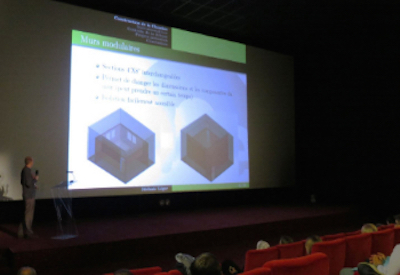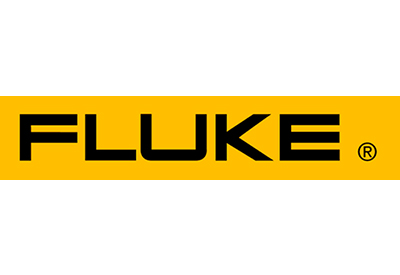Breaking Down the Construction Language Barrier with A Common Data Standard

July 5, 2021
By Lauren Ginsberg
Construction is a high-stakes industry where effective communication is critical to achieving successful project outcomes. But what happens when teams are not speaking the same language or using the same naming conventions: chaos.
Breaking down the language barrier in construction is critical and the difference between project success and failure. Speaking a common construction language not only creates high-performing teams but eliminates the risk of miscommunication that can cause rework, schedule delays, and cost overruns.
To support teams and minimize time spent on unnecessary tasks, we announced ISO 19650 workflows in Autodesk Construction Cloud that enable contractors to comply with industry standards and client requirements, ensuring successful project delivery.
“Managing construction documents across the project lifecycle ensures that teams have consistent, well-structured, and easily identifiable project information at each stage of the project. This drives efficiencies and reduces risk, improves quality, and increases productivity,” says Lee Barnett, Digital Delivery Manager at Curtins.
The Importance of Standards and Specifications in Construction
Contractors are on a continual quest to improve on-site productivity. Adopting a common data standard is one way for project stakeholders to consistently capture, store, and distribute information to improve collaboration, communication, and coordination. This helps to streamline construction processes to reduce inefficiencies on the jobsite and improve overall performance.
“With construction standards, we can establish a uniform way of working to drive predictability and control over our projects,” says Gert-Jan Ditsel, BIM Manager at Dura Vermeer. “By using standards on our projects, we can easily configure, search, and distribute information more quickly and efficiently to deliver a high-quality project for the owner.”
How a Common Data Environment Supports ISO 19650 Workflows
ISO 19650, an international standard for managing information over the whole lifecycle of a built asset has meant that our industry now has a common language to talk about and understand data.
“As a European contractor delivering highly complex engineering projects globally, an international collaborative language for the management of digital information is a must-have,” says Natasha Renwick-Curran, Group Document Controller, Mercury. “ISO 19650 sets out the requirements for a Common Data Environment (CDE) that can lead to consistent and effective data capture and exchange that drives better project delivery across all our geographies.”
The ISO standard calls for project data to be stored and managed in a specific way, and as a result, project teams need a compliant environment to store data.
Autodesk Construction Cloud is a CDE that supports customers in complying with ISO 19650 standards. The platform facilitates greater collaboration between teams to avoid duplication and mistakes by collecting, managing, and disseminating up-to-date documentation across the entire project team. With a cohesive way to review, share, and publish design and construction documentation, stakeholders have access to the right information at the right time.
3 Ways ISO 19650 Workflows in a CDE Provide Better BIM Management
1. Customizes Naming and Labeling of Documents
“Research shows that teams waste approximately 20% of time searching for information on projects,” says Renwick-Curran. “With workflows that now support ISO 19650 standards in Autodesk Construction Cloud, we can establish and create naming standards that allow us to easily and quickly find documents.”
With standard naming conventions, teams can enforce document control to ensure that information is stored in the right place. In addition, consistently organizing files eliminates guesswork and enables teams to work more confidently.
2. Provides Access to Real-time Information
“Delivering incorrect information can result in project delays, increased costs, and safety risks,” says Ditsel. “Document management standards create standardized operations across multiple projects throughout the entire business, which makes us more efficient.”
With a cloud-based platform, teams can access project data regardless of location. In addition, with files shared on a common data environment, teams have visibility into updates in real-time and can more easily navigate project information.
3. Increases Collaboration across Multidisciplinary Project Teams
“ISO 19650 provides a framework to manage information including exchanging, recording, versioning, and organizing for everyone in the supply chain involved during the whole lifecycle of the project,” says Juan Tena Florez, Regional Digital Design Manager at KEO International. “By promoting the use of standards, we are driving consistency in how we are communicating across the project and have higher levels of collaboration between project teams.”
As the construction industry continues to adapt to digital workflows through BIM, we’re going to need to see document management standards enforced at the project level across project phases from design through construction. With this approach, information will become increasingly structured, allowing teams to improve efficiencies.
Getting Started with Standardized Workflows
“As an organization, we recognized early on that BIM was not just an evolution in drawing technology, but the catalyst for a broader shift in the way teams work together on construction projects,” says Barnett. “For the first time, BIM created a framework and quality standards that everyone in the built environment could embrace, enabling greater collaboration.”
When everyone can communicate with complete clarity, it will minimize confusion, ease tension and uncertainty, strengthen ties, and promote a more unified, supportive team. In addition, by supporting a common data standard in Autodesk Construction Cloud, teams can work more confidently and spend more time on value-added tasks.
Learn more about how workflows in Autodesk Construction Cloud that support customers’ compliance with ISO 19650 can help reduce information loss, increase consistency and quality in data, and save costs to optimize project delivery.

















